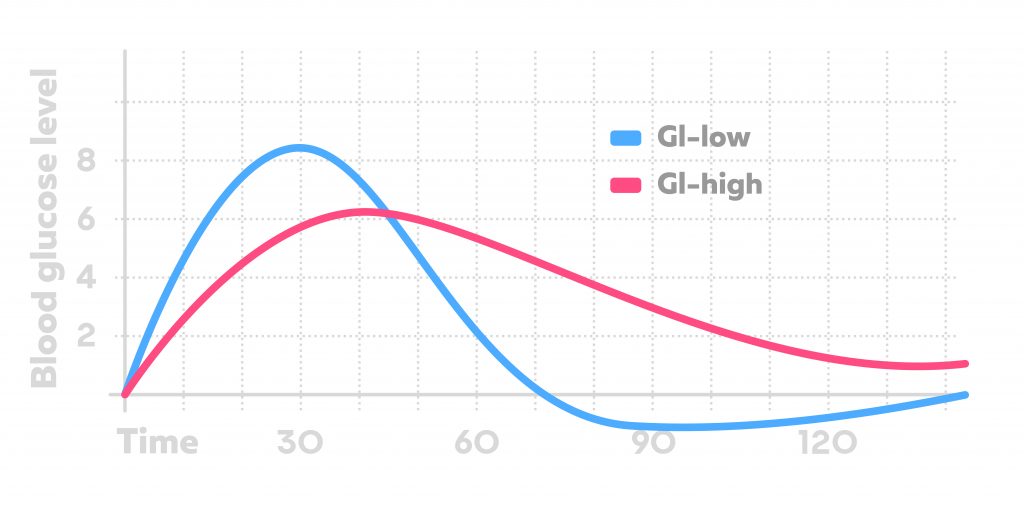When shopping for food, we repeatedly hear about the glycemic index. Warned by nutritionists and doctors, some of us underestimate its importance, choosing products that are not necessarily healthy, but those that best satisfy our appetite. It can be hypothesized that this approach may be the result of a lack of desire to eat properly and healthily due to, for example, insufficient time in the face of daily responsibilities, or simply a lack of elementary knowledge about the glycemic index. What is the glycemic index and how does it affect our body? You will find the answer in this article.
What is Glycemic Index?
Glycemic Index (GI) is the percentage increase in blood glucose levels a few hours after eating a portion of a product containing 50 grams of bioavailable carbohydrates. In short, it is an indicator that allows us to classify food products according to their effect on blood glucose levels after a meal. In particular, the rate at which glucose levels rise. This index is especially important for diabetics and people at high risk of developing cardiovascular diseases.
In the context of blood glucose levels, it is worth explaining what the glycemic load is because it is not the same as the glycemic index. Glycemic load is a much broader concept than glycemic index because it is the total amount of carbohydrates present in a serving of a given product, not a portion of it.

How do we calculate glycemic load?
We use the following formula to calculate glycemic load
Glycemic load = C x GI / 100,
Where
C - is the number of carbohydrates absorbed per serving of the food
GI - its glycemic index.
With the above in mind, it should be noted that the most sensible, and therefore the most beneficial for the body, solution is to eat food with a low glycemic load.
It is scientifically accepted that glucose is a chemical compound that has a GI of 100, being a point of reference for other types of food.
Glycemic index in the diet
A diet based on products with a low glycemic index (the Montignac Diet) is recommended because it reduces triglyceride levels in the blood, thus minimizing the risk of cardiovascular diseases and kidney, pancreas, and prostate problems.
What's more, since the glycemic index also affects the appetite, the presence of low-GI products in the diet will ensure a constant and, most importantly, not particularly high concentration of sugar in the blood, which prevents possible hunger pangs.
It can be assumed, therefore, that treatment with a low-GI diet provides some degree of metabolic control and balance, while at the same time reducing the risk of serious diseases closely related to the disturbed metabolism of carbohydrates.
On the other hand, a diet consisting mainly of types of food with high GIs not only increases the possibility of obesity and insulin resistance but also intensifies attacks of hunger pangs.
Can fruit have a low glycemic index?
Fruit and vegetables are often mentioned in the context of the glycemic index. Although most fruits have a high GI, there are some that can be consumed without any worry about a sudden rise in insulin levels in the blood. Such fruits include apples, currants, nectarines, tangerines, strawberries, cherries, grapefruit, gooseberries, oranges, and raspberries. Those following a low-GI diet must remember that it is their responsibility to eliminate bananas and watermelon from their diet, as these fruits have the highest GI of all fruits.









